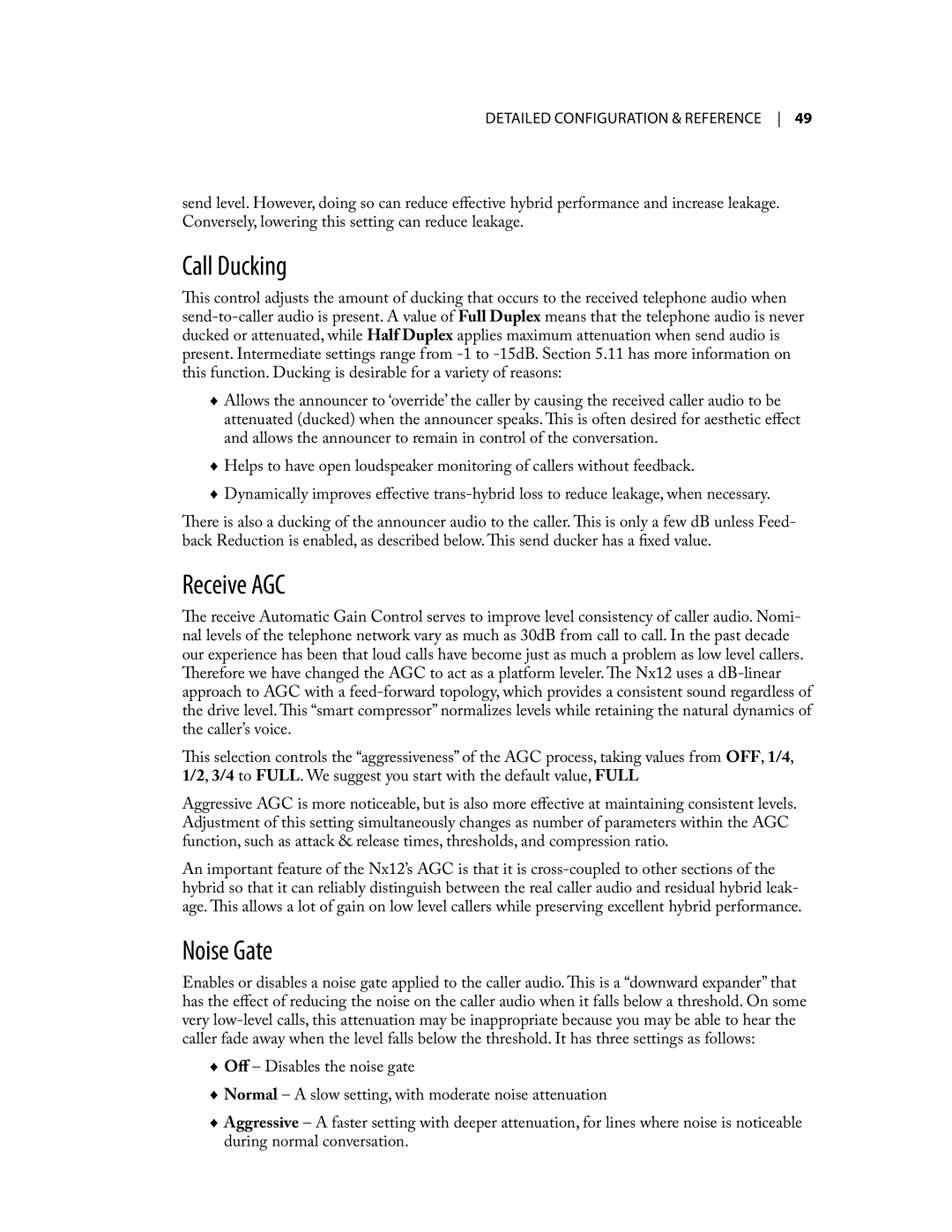detailed configuration & reference 49
send level. However, doing so can reduce effective hybrid performance and increase leakage. Conversely, lowering this setting can reduce leakage.
Call Ducking
This control adjusts the amount of ducking that occurs to the received telephone audio when
♦♦ Allows the announcer to ‘override’ the caller by causing the received caller audio to be attenuated (ducked) when the announcer speaks. This is often desired for aesthetic effect and allows the announcer to remain in control of the conversation.
♦♦ Helps to have open loudspeaker monitoring of callers without feedback.
♦♦ Dynamically improves effective
There is also a ducking of the announcer audio to the caller. This is only a few dB unless Feed- back Reduction is enabled, as described below. This send ducker has a fixed value.
Receive AGC
The receive Automatic Gain Control serves to improve level consistency of caller audio. Nomi- nal levels of the telephone network vary as much as 30dB from call to call. In the past decade our experience has been that loud calls have become just as much a problem as low level callers. Therefore we have changed the AGC to act as a platform leveler. The Nx12 uses a
This selection controls the “aggressiveness” of the AGC process, taking values from OFF,1/4, 1/2, 3/4 to FULL. We suggest you start with the default value, FULL
Aggressive AGC is more noticeable, but is also more effective at maintaining consistent levels. Adjustment of this setting simultaneously changes as number of parameters within the AGC function, such as attack & release times, thresholds, and compression ratio.
An important feature of the Nx12’s AGC is that it is
Noise Gate
Enables or disables a noise gate applied to the caller audio. This is a “downward expander” that has the effect of reducing the noise on the caller audio when it falls below a threshold. On some very
♦♦ Off – Disables the noise gate
♦♦ Normal – A slow setting, with moderate noise attenuation
♦♦ Aggressive – A faster setting with deeper attenuation, for lines where noise is noticeable during normal conversation.
